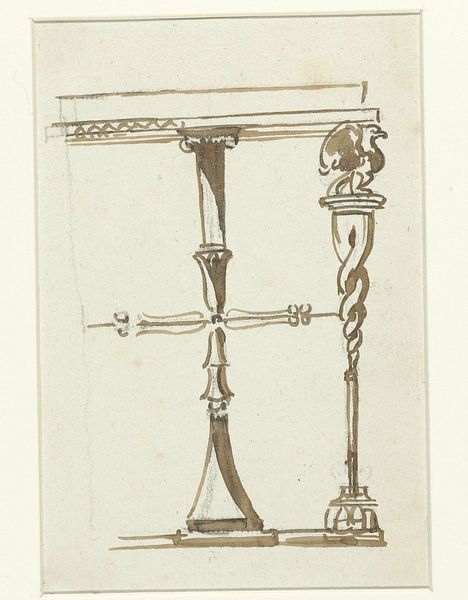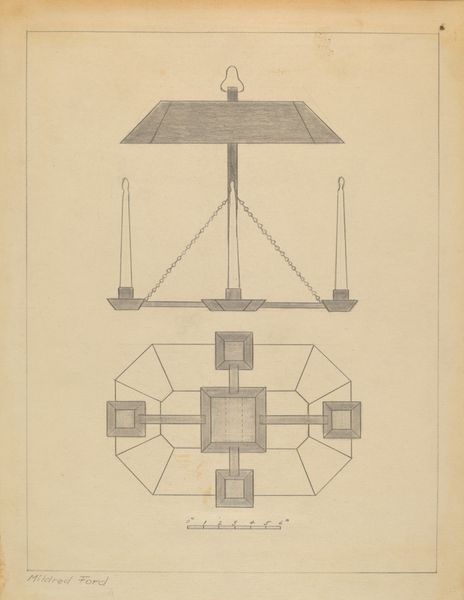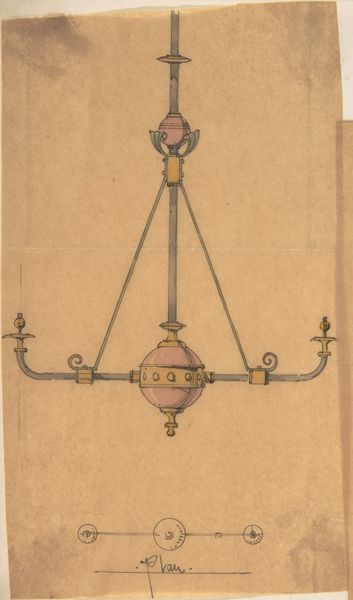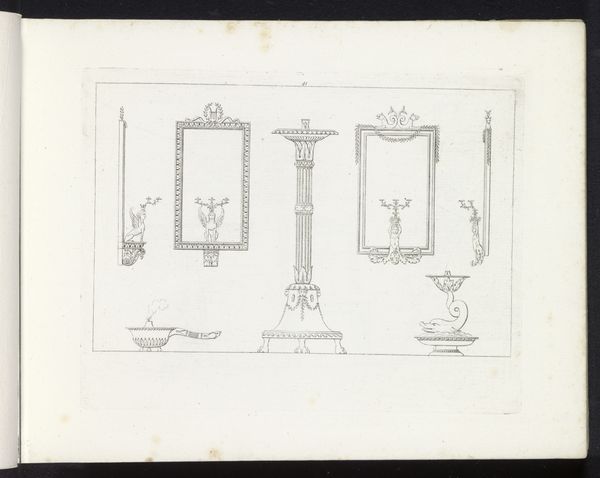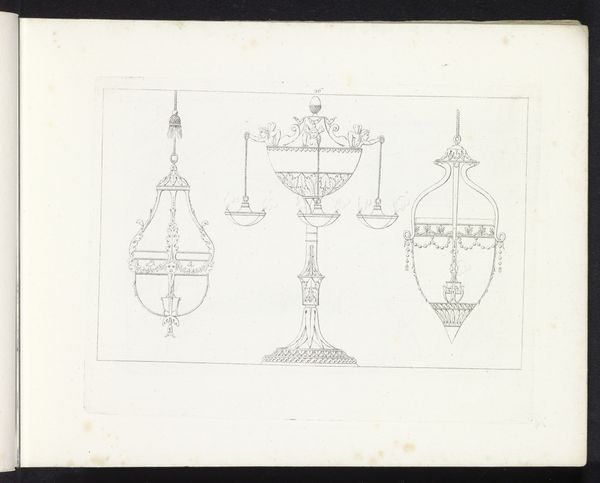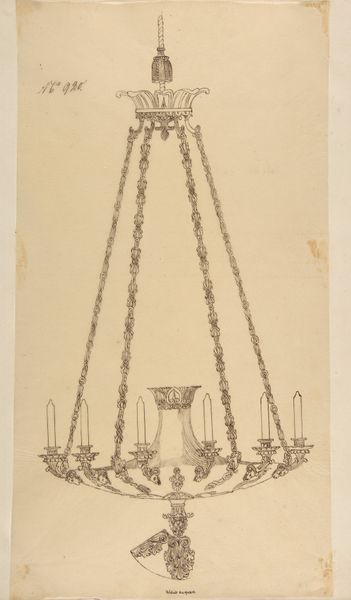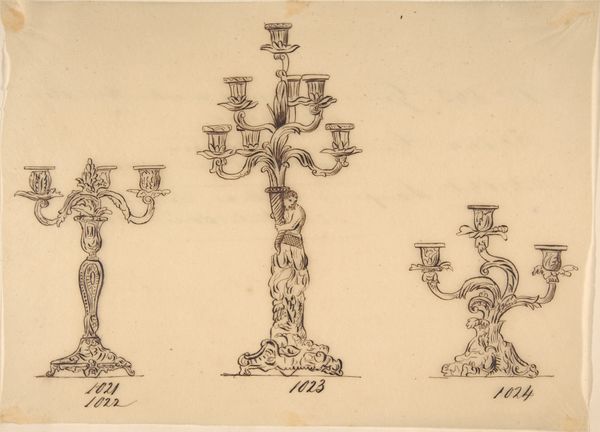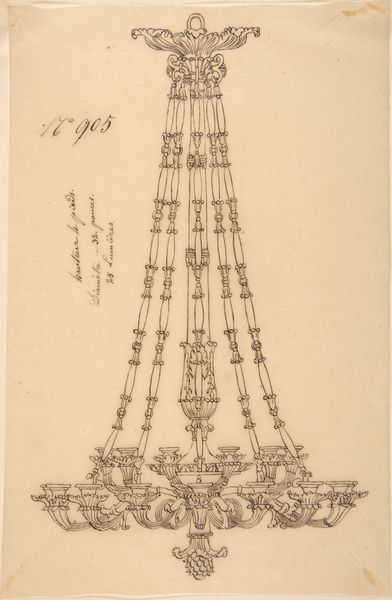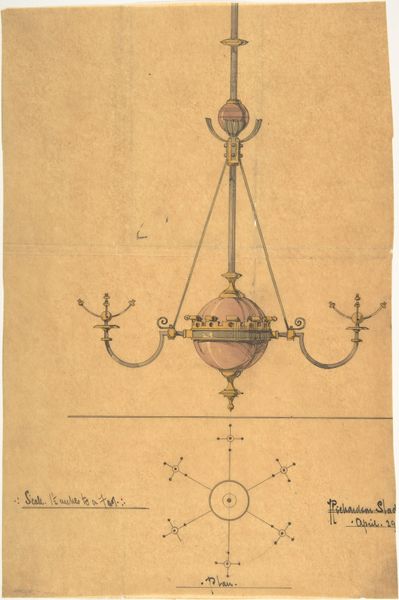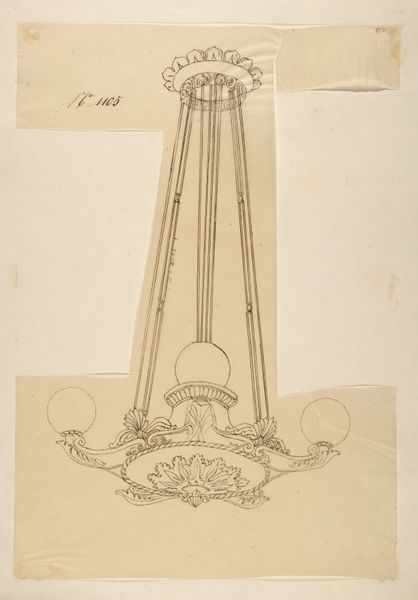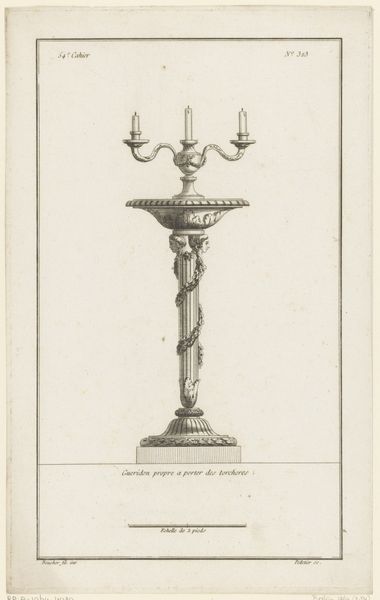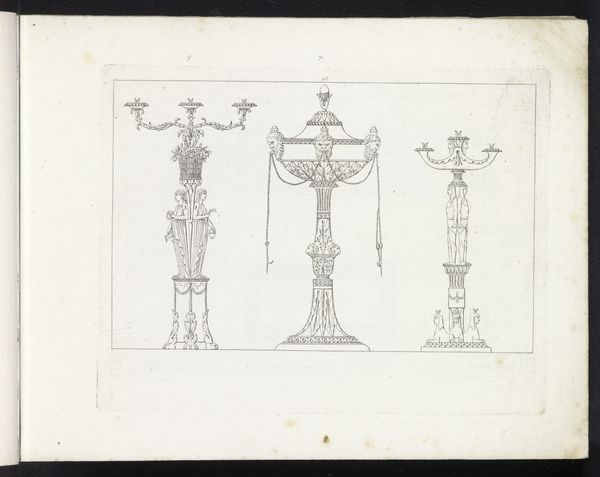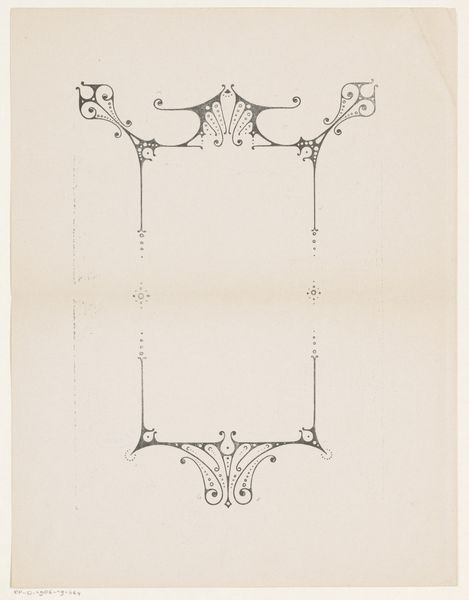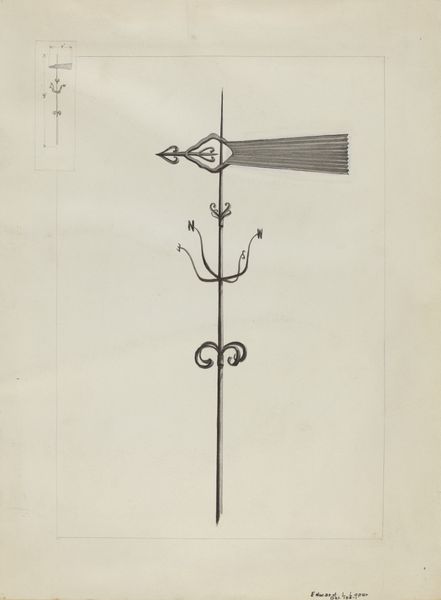
drawing, print, etching, paper, pencil
#
drawing
#
neoclacissism
# print
#
etching
#
etching
#
paper
#
pencil
#
decorative-art
Dimensions: sheet: 16 x 9 1/8 in. (40.6 x 23.1 cm)
Copyright: Public Domain
Curator: Here we have "Four Designs for Hanging Light Fixtures," an anonymous 19th-century work, blending etching, pencil, and printmaking on paper. My first impression is one of delicacy, of restrained elegance. Editor: Delicacy, yes, but also of constraint, perhaps reflecting the era’s rigid social structures. Lighting wasn’t merely functional, it was performative. These fixtures illuminated spaces that, then as now, often privileged certain bodies and activities while casting others into shadow, both literally and figuratively. Curator: I'm struck by the symmetry, the clear lines. Notice the balanced arrangements on either side of the central supports. Each design exhibits subtle variations in ornamentation, showcasing a mastery of neoclassical form and balance. Semiotically, one could read them as exercises in refined geometry. Editor: I agree, the visual order is compelling, however, order, especially of the Neoclassical kind, was wielded to bolster very specific notions of propriety and taste, which also implied exclusion, didn't it? Consider the wealthy homes these designs would have been made for. What class of people got to literally inhabit the "light?" Curator: I concede to your point; nevertheless, focus on the composition itself, the precision of the etching and the meticulous detail achieved by the artist using limited tools. It is very much about the inherent properties of line and form and not particularly indicative of any explicit narrative agenda, is it? Editor: The absence of an overt "agenda," as you say, doesn’t mean it wasn't inherently a tool to reinforce prevailing norms. Whose gaze were these designs meant to please? It’s about access to illumination, both in the domestic and societal sphere. Whose narratives are deemed worthy of light? Curator: Ultimately, regardless of that, the draftsmanship is still remarkably skilled, creating harmony through repeating elements. Each variation displays thoughtful application of ornamentation within a pre-established classical structure. It truly represents the spirit of refined craftsmanship. Editor: Agreed. It makes us think critically, doesn't it? Both about the material skill in representing a "light," and who benefits, culturally and politically, when "light" is provided or withheld.
Comments
No comments
Be the first to comment and join the conversation on the ultimate creative platform.
